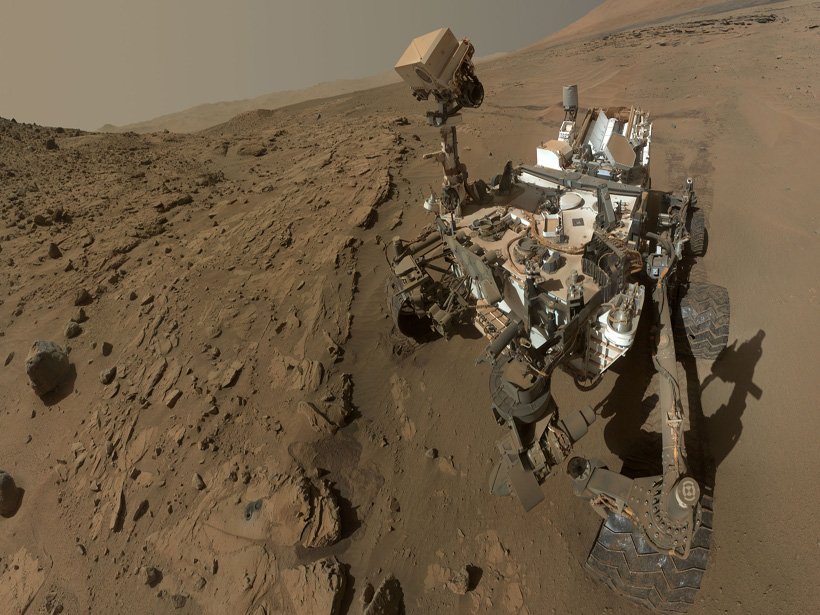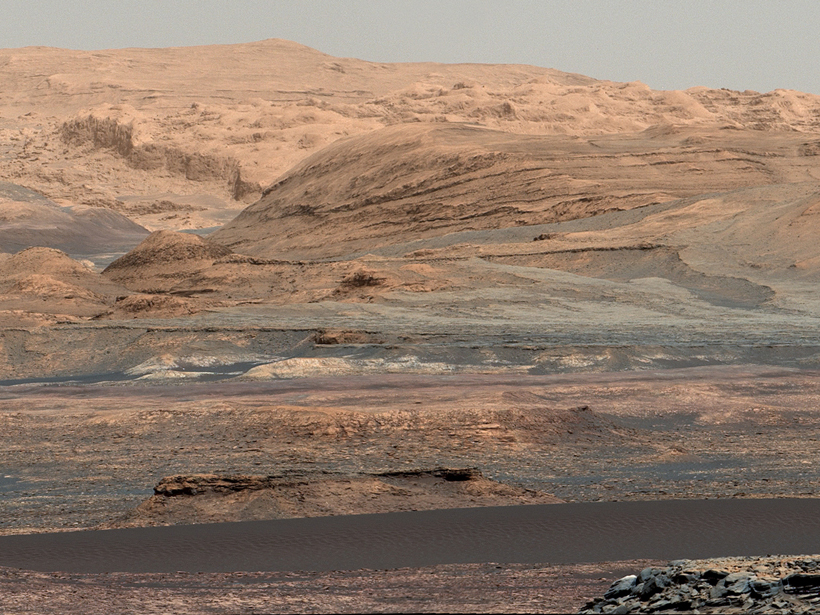Light-colored Gale crater rocks could have formed from intraplate volcanoes, not continental crust, new study finds.
Gale Crater
History of Mars’s Water, Seen Through the Lens of Gale Crater
Research uncovers more of Mars’s past, when flowing water may have been transient before eventually disappearing.
History of Water on Mars’s Surface Is Longer Than We Thought
Curiosity’s two-step heating experiment of mudstone at Gale crater reveals minerals that formed in the presence of water less than 3 billion years ago.
A Rover’s Eye View of Moving Martian Dunes
A new special issue of JGR: Planets presents findings on sand motion, morphology, and mineralogy from the Curiosity rover’s traverse of the active Bagnold dune field in Gale crater.
Insights into the Habitability of Mars
NASA’s Curiosity rover explored the Kimberley region of Mars to search for signs that the planet was once habitable.
Minerals Hint at Liquid Groundwater, More Oxygen in Mars's Past
Manganese deposits in Gale Crater fractures are similar to Earth features that usually require flowing water and highly oxidizing conditions.
Curiosity Sends Curious Water Data from Mars
The rover's neutron spectroscopy instrument hints at an unexpected trend: The upper soil levels in the layers of Gale Crater's Kimberley formation seem to hold more water-associated hydrogen.
Where Curiosity Has Taken Us
The Curiosity rover, one of NASA's flagship missions, analyzes Martian geology, geochemistry, climatology, and radiation to assess whether Mars could have supported microbial life.
Curiosity Rover Finds Organic Molecules on Martian Surface
Scientists assess the present and past habitability of Mars from organic compounds detected at Gale Crater.









